
Perched at 1,000–1,600 m above sea level, Dong Van Old Quarter is a hidden gem in Ha Giang’s rugged highlands. Nestled among towering limestone cliffs and misty forests, it blends H’Mong heritage with colonial charm and bustling local markets. This guide by Phieu Travel shows what to eat, where to stay and how to explore Dong Van Ancient Town like a local.
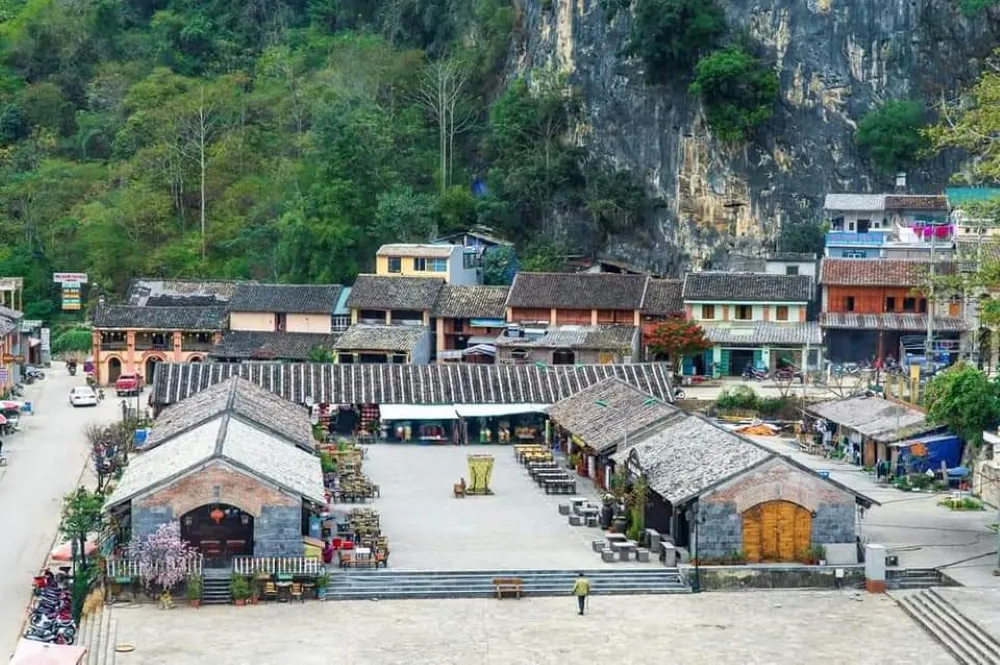
1. Dong Van Old Quarter – A timeless gem of the stone plateau
Dong Van Old Quarter sits at the center of Dong Van Town, famous for its stone houses, colorful markets, and rich cultural identity. To truly appreciate its essence, one must look beyond the architecture – into its layered history and ancient legends.
1.1 Unique history and cultural heritage
Originally a Tay trading hub called “Tong Puon,” meaning “trading field,” Dong Van became a strategic outpost for the French colonial government in 1887. By the early 1900s, it had grown into a bustling market town serving northern Vietnam.
The town was historically home to the Tay, H’Mong and Hoa communities, later joined by the Nung and Dao. This ethnic mosaic created a unique cultural identity, reflected in its hybrid architecture of yin-yang tiled roofs, rammed-earth walls, and narrow stone-paved alleys.
In 2010, Dong Van Ancient Town was designated a core zone of the UNESCO-recognized Dong Van Karst Plateau Global Geopark, attracting travelers seeking both cultural depth and geological wonder.
1.2 Mystical tales and legends of the Dong Van ancient town
Ancient legends still shape life in Dong Van. From dragon tales and sacred lakes to mysterious stone carvings, spirit shrines and timeless rituals, each story reveals a deeper layer of the highland’s cultural soul.
- The sacred dragon of Lung Cu
High on Rong Mountain in Lung Cu Commune, legend tells of a celestial dragon that once landed here, captivated by the landscape. Before returning to the sky, it left behind its eyes. Today, these two crescent-shaped lakes are believed to provide water and blessings to nearby villages.
- The mysterious carvings of Ho Quang Phin
In Ho Quang Phin Commune, more than 100 petroglyphs have been found carved into granite rocks, dating back over 1,000 years. Featuring spirals, fertility symbols and map-like patterns, the markings remain unsolved but are thought to reflect spiritual rites or ancient territorial claims.
- The water spirit shrine of Lang Nghien
At the edge of Dong Van Old Quarter lies a humble shrine in Lang Nghien Hamlet, said to be the home of the Water Spirit. Legend tells of a spring that emerged after villagers performed a ritual pleading for water. Locals still gather here during Lunar New Year to pray for health, rain and good harvests.
2. Authentic highland shopping and entertainment
Held every Sunday in the heart of Dong Van Old Quarter, the Dong Van Market draws ethnic communities from across the plateau. H’mong, Tay, Dao, Nung,… villagers gather in colorful attire to exchange goods, meet old friends and maintain cultural ties that span generations.
Beyond trading, the market hosts monthly events with brocade weaving, folk games, live performances,…. These lively gatherings offer visitors a glimpse into the region’s traditions, expressed not through museums but in the everyday lives of its people.
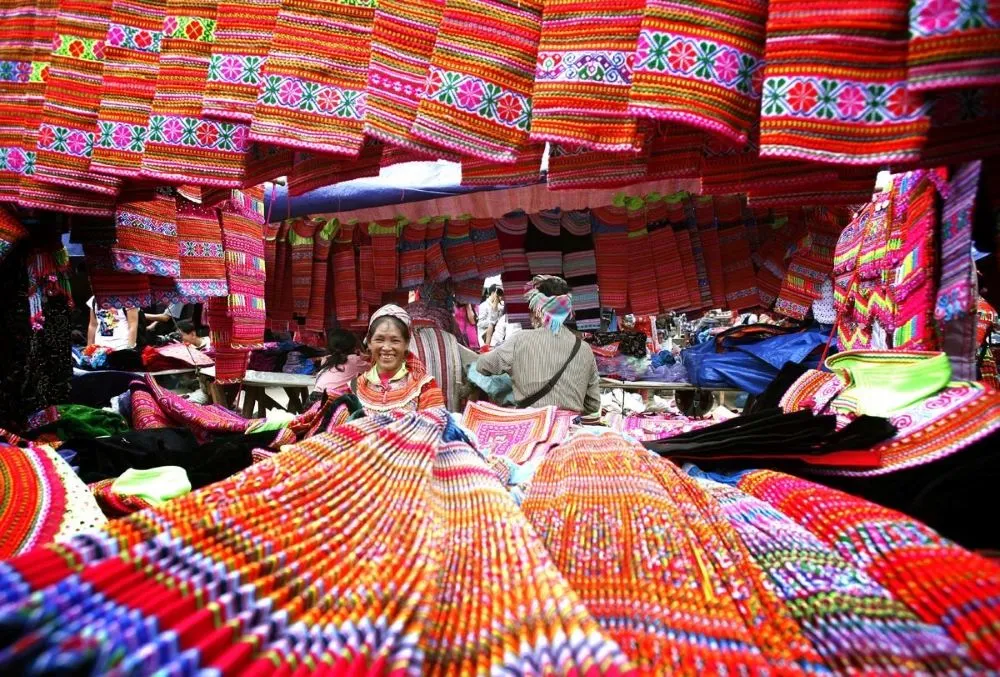
3. Must-try local dishes that steal the show
Dong Van’s cuisine reflects the land’s ruggedness and resourcefulness. Here are some must-try specialties:
- Au Tau Porridge: A warm, bittersweet rice porridge made from simmered au tau root, often eaten at night to fight the mountain chill.
- Thang Co: A rich stew of horse meat, seasoned with lemongrass and cardamom – deeply rooted in H’mong culinary tradition.
- Five – Color Sticky Rice (Xoi Ngu Sac): Dyed naturally with herbs, this dish is both a feast for the eyes and a symbol of ethnic harmony.
- Men Men: A steamed cornmeal staple in H’mong households, usually paired with pork or sautéed greens.
- Banh Tam Giac Mach (Buckwheat Cake): Slightly sweet, nutty and perfect with tea on misty mornings.
- Ruou Ngo (Corn Wine): Distilled by hand in mountain villages, this traditional liquor offers a fiery finish and is shared in every local celebration.
- Thang Den: Ha Giang’s take on glutinous rice balls in sweet ginger syrup, often served as a warm dessert at roadside stalls.
- Smoked Buffalo Meat: Strips of buffalo are marinated with salt, ginger, and chili, then smoked over wood for days. It’s chewy, rich, and full of flavor.
4. Traditional festivals in the old quarter
Dong Van’s cultural calendar features a rich lineup of ethnic festivals, each offering deep insights into the spiritual and communal life of Ha Giang’s highlands.
- Long Tong Festival (January 1–5, Lunar Calendar): A Tay ethnic celebration of agricultural prosperity. Visitors can witness rituals to honor land and water gods, enjoy then folk singing, and join traditional games like top-spinning and tug-of-war.
- Khau Vai Love Market (March 27, Lunar Calendar): Hosted in Meo Vac, this event reunites star-crossed lovers for one special day of music, confessions, and cultural exchange through H’mong flutes and love songs.
- Gau Tao Festival (January 1–15, Lunar Calendar): An annual H’mong festival to give thanks and pray for health and fertility. Key activities include khen dancing, love duets, and community competitions.
- Lo Lo New Year Festival (Dec 25–30, Lunar Calendar): Held in Lung Cu, this is a vibrant family-centered celebration. It features ancestor offerings, symbolic food rituals, and gender-specific customs that honor balance and harmony.
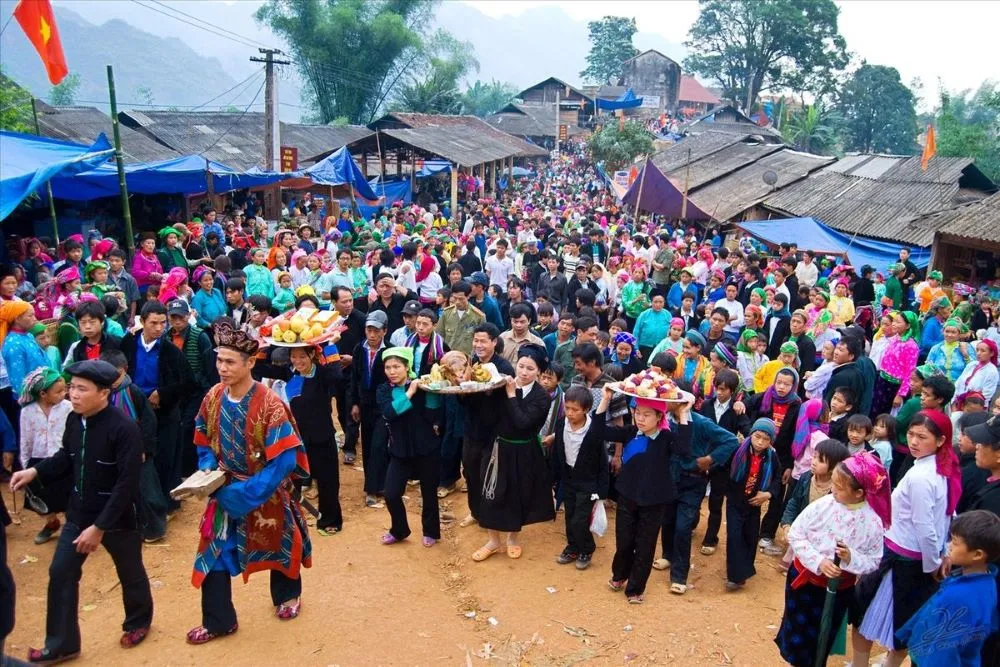
5. How to get to Dong Van Old Quarter
Reaching Dong Van Old Quarter may take time, but the journey is part of the adventure. Here’s how you can get there from different regions of Vietnam.
- From Hanoi: You can go by sleeper bus, limousine van or motorbike. Buses take 6–7 hours and are budget-friendly. Riding a motorbike takes longer but rewards you with epic views along Ma Pi Leng Pass and Quan Ba.
- From Southern Vietnam: Fly to Hanoi, then continue to Ha Giang by bus or van. Direct buses are available but take over 40 hours, only suitable if you have lots of time and patience.
- From Central Vietnam: From cities like Da Nang, Hue, Quang Binh,… , fly or take the train to Hanoi. Then head to Ha Giang by road. It’s an easy route with beautiful scenery on the way.
6. Best stays with stunning views near Dong Van Old Quarter
If you’re planning to stay near Dong Van Ancient Town, there’s no shortage of comfortable and scenic options. From traditional stone houses to modern homestays, each offers a unique experience with views of the surrounding karst mountains and town rooftops.
- Nha Co Homestay
Located in the heart of Dong Van Old Quarter, Nha Co Homestay immerses you in heritage charm. Built from stone and wood, the home features warm interiors and a peaceful courtyard. Rates start from 200,000 VND (around 8 USD) and go up to 700,000 VND (28 USD), depending on room type and season.
- Plum Homestay
Set along Hanh Phuc Street, Plum Homestay combines mountain-facing balconies with rustic decor and modern comfort. It’s a favorite among couples and families seeking privacy and scenery. Prices range from 350,000 VND (14 USD) to 2,500,000 VND (100 USD), with options from shared dorms to luxury suites.
- Ha Giang Holic
Located on Tran Phu Street, Ha Giang Holic blends minimalist design with a relaxed backpacker vibe. The rooftop terrace offers panoramic views of Dong Van’s rugged terrain. Both private and shared rooms are available, with prices between 150,000 VND (6 USD) and 950,000 VND (38 USD).
7. Essential tips for first-time visitors to Dong Van Old Quarter
Before you go, here are a few essential tips to help you make the most of your visit to Dong Van Old Quarter:
- Plan for At Least a Day: Spend at least one day exploring Dong Van’s highlights, including Ma Pi Leng Pass and Lung Cu Flag Tower. Add an extra day if you plan to hike or visit remote villages.
- Choose the Right Season to Travel: Spring and autumn offer mild, pleasant weather. Winter is cold, while summer can be hot and rainy. Plan your trip between March and May or September to November for the best conditions.
- Respect Local Cultures and Customs: Dong Van is home to many ethnic minorities. Dress respectfully, ask before taking photos, and follow local traditions when visiting villages. Politeness goes a long way in building cultural connection.
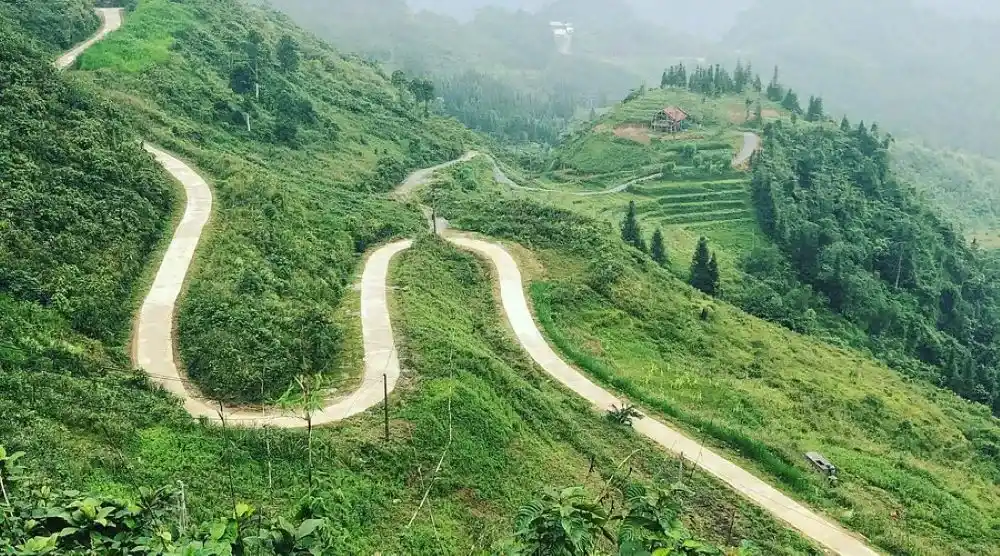
8. Explore Dong Van Old Quarter with Phieu Travel – A journey to remember
Phieu Travel is your trusted local guide to uncovering the true soul of Dong Van Old Quarter, one of the most atmospheric stops along the Ha Giang Loop. With deep roots in Ha Giang and a passion for meaningful journeys, we offer more than just sightseeing – we open doors to authentic highland life.
- Tailored itineraries designed to fit your time, interests, and adventure level.
- Insider access with local guides who speak the language of the land.
- Cultural immersion through visits to Lolo, Hmong, and Dao communities.
- Ethical travel experiences that support local families and traditions.
- Dedicated support team ensuring every detail of your trip runs smoothly.
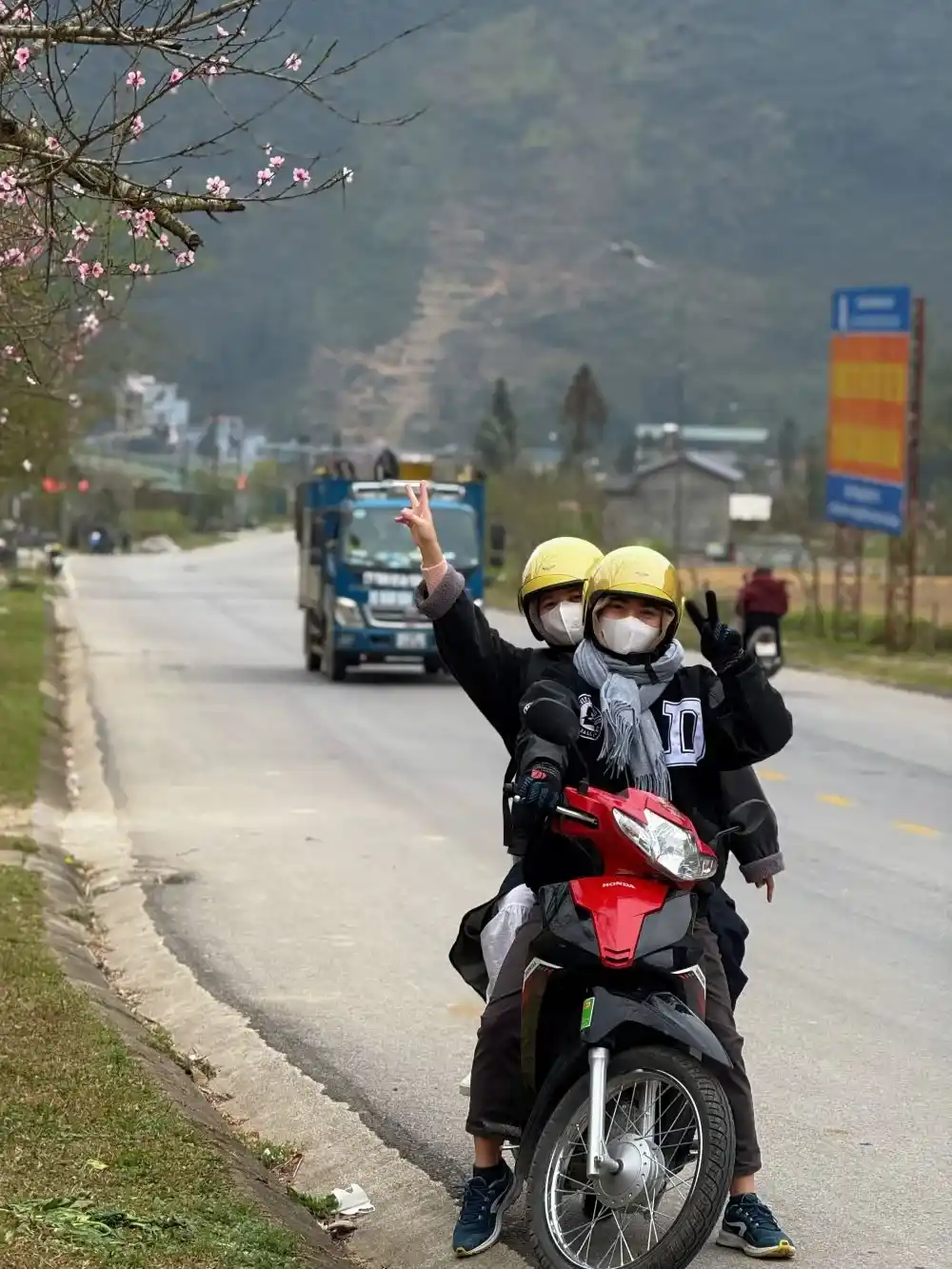
Let Phieu Travel be your companion on the journey to uncover the timeless charm of Dong Van Old Quarter. From cobbled streets and ancient stone houses to the warm smiles of highland communities, every step becomes more meaningful when shared with those who truly know the land. Your adventure begins here and we’re here to make it unforgettable.


 Lung Cu Flagpole
Lung Cu Flagpole
Many wonder what Du Gia village offers.
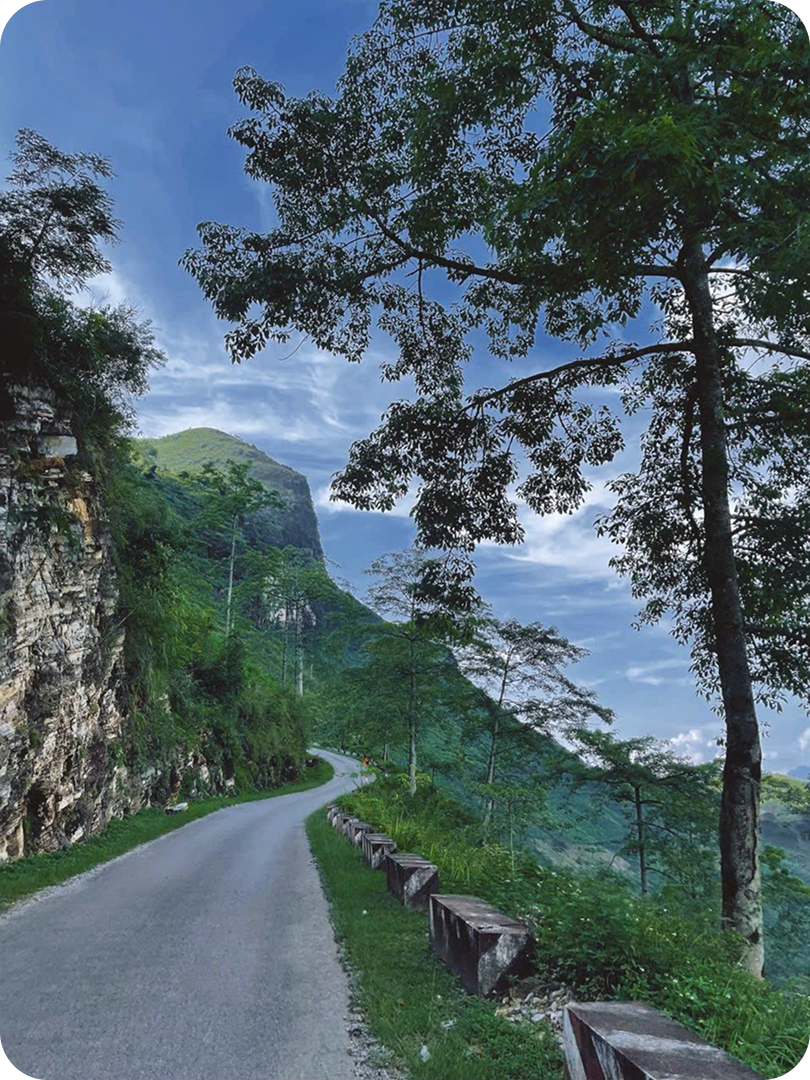
 Du Gia
Du Gia
Many wonder what Du Gia village offers.
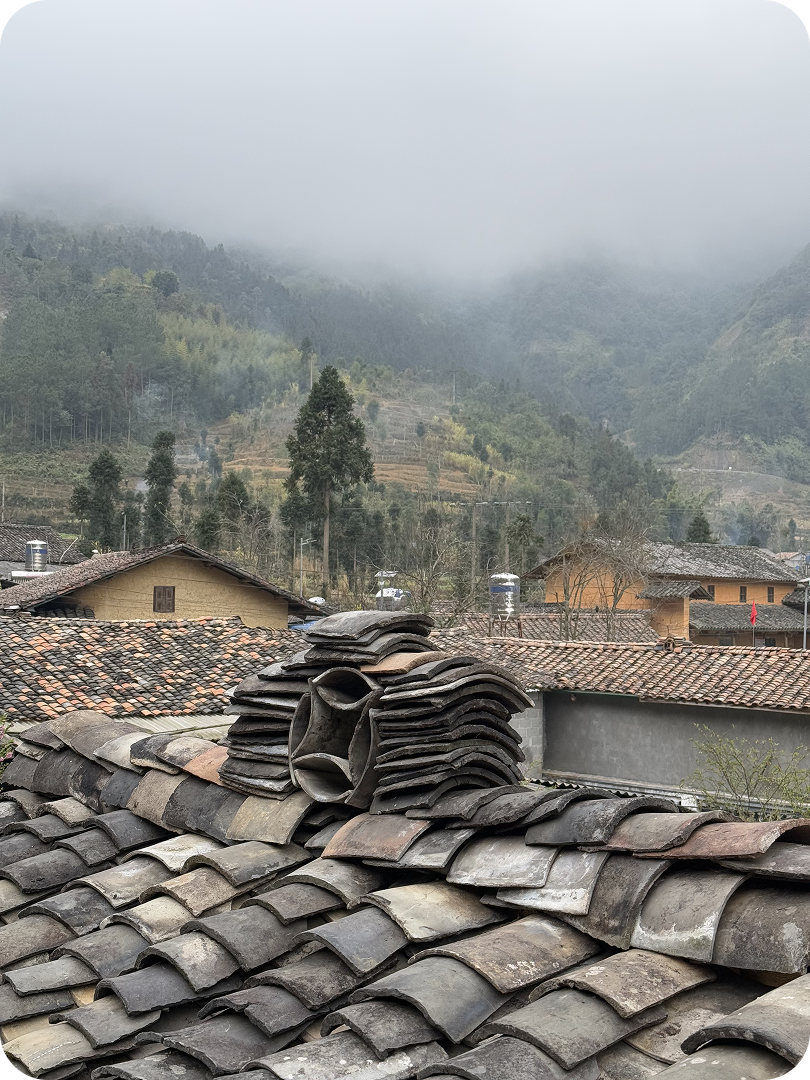
 Pao’s House
Pao’s House
Many wonder what Du Gia village offers.

 Nho Que River
Nho Que River
Many wonder what Du Gia village offers.

